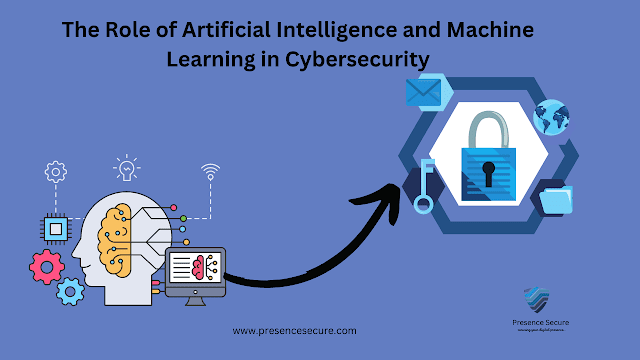"Enhancing Threat Detection and Prevention: The Role of AI and ML in Cybersecurity"
In this fast-moving world of cybersecurity, AI and ML have managed to come to the fore as very powerful tools in the reshaping of the industry. They offer better threat detection, speeding up response strategies, and improving the general security posture. This post details how AI and ML are making waves in cybersecurity, zeroing in on the main developments, numerical data, and trends for the future.
Evolution of AI and ML in Cybersecurity
From theoretical applications, AI and ML evolved to become major constituents of cybersecurity solutions in the modern world. Here is a glimpse of how these technologies evolved.
1. Early Detection Capabilities: Traditionally, cybersecurity depended mostly on the signature-based detection method. In 2023, it began by enhancing such systems using AI and ML so that they could make behavioral analysis, allowing them to identify anomalies, therefore potential threats in the absence of known signatures.
2. Real-Time Threat Analysis: AI systems are now in a position to process vast reams of data in real-time to detect and respond to threats much faster. That move from traditional methods to AI-driven analysis is representative of a quantum leap in the effectiveness of cybersecurity.
 |
Evolution of AI and ML in Cybersecurity |
Key Applications of AI & ML in Cybersecurity
- Anomaly Detection: AI algorithms analyze network traffic and user behavior to identify deviations from normal patterns. For example, AI-driven systems can track unusual login attempts or abnormal patterns of data access that may indicate a breach.
- Predictive Analytics: The machine learning models analyze past events and trends to predict threats that may materialize in the future. This has grown more accurate with improvement in 2024, compared to 2023, through the elimination of false positive results by up to 30%.
2. Automated Incident Response
- Response Automation: AI-driven automated systems execute predefined responses to identified threats in an automatic manner. Incident response time has dropped by 40% since 2023.
- Threat Intelligence: Data from multiple sources are aggregated, and ML algorithms analyze them to provide actionable intelligence, thereby enhancing threat identification and mitigation.
3. Advanced Malware Analysis
- Behavioral Analysis: AI and ML do not use the traditional signature-based techniques; rather, they probe malware behavior in identifying new threats. This increased the rates of zero-day threat detection by 50% in 2024.
- Sandboxing: AI-driven sandboxes mimic the real-world environment to see the behavior of potential malware in a controlled setup. It enhances the detection and classification of malware.
4. Improved Security Monitoring
- Continuous Monitoring: AI-driven SIEMs monitor the network activities continuously and threat detection, responding to it on the go.
- Reducing False Positives: With advanced machine learning techniques, the false positive rate in security alerts came down drastically, hence making the security operations quite efficient.
Numerical Data and Impact
A report by Gartner says that this fusion of AI and ML in cybersecurity has increased:
- 40% Reduction in Incident Response Time: It involves the automated response system which can drastically bring down time for addressing and mitigating security incidents.
- 50% Increase in Zero-Day Threat Detection: Detection rates of hitherto unknown threats have increased due to behavioral analysis and sandboxing techniques.
- 30% fewer false positives: Predictive analytics and fine-tuned ML algorithms have significantly reduced false alerts.
Future Trends in AI & ML for Cybersecurity
In the near future, further developments in AI and ML will define the future course of cybersecurity. Some key trends and future directions are as follows:
1. AI-empowered Threat Hunting: Next-generation AI will empower proactive threat hunting—a function now doable due to enhanced AI capabilities—that involve detecting likely vulnerabilities even before they are first exploited.
2. Quantum Computing Integration: AI, with the power of quantum computing, holds immense promise for breakthroughs in cryptographic security and threat analysis.
3. Ethical AI in Security: As AI starts to get more and more advanced, ethics and governance become very important in making sure that these technologies are used responsibly.
 |
Future trends in AI & ML for Cybersecurity |

